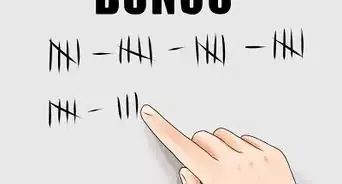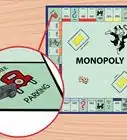This article was co-authored by wikiHow staff writer, Aly Rusciano. Aly Rusciano is a Creative Writer based outside of Nashville, Tennessee. She has over ten years of experience in creative, academic, and professional writing. Aly’s writing has been nationally recognized in the Sigma Tau Delta Rectangle and featured in Blue Marble Review, The Sunshine Review, PopMatters, and Cathartic Literary Magazine. She graduated from The University of Tennessee at Martin with a BA in English, focusing in Creative Writing and minoring in Theatre.
Learn more...
Need a way to break the ice and get to know your peers? Well, a game of 2 Truths and a Lie will do just that! Not only is this game super fun and simple to play, but it’ll also help you learn more about your friends, family, or classmates. So, what lies can you tell in this game, and how can you be convincing? Keep reading to find out!
Steps
How to Play
-
1Gather a group of 2 or more people. The more people involved in the game, the more fun you’ll have! Play this icebreaker on the first day of school, during a club meeting, or at a family reunion.
-
2Take turns sharing 2 truths and 1 lie. These facts and lies can be as silly or serious as you’d like (check out our examples again for even more ideas). Try to be as convincing as possible.[1]
-
3Ask the group which is the lie. The object of the game is to fool your friends or family members into thinking your lie is true. If they guess the lie correctly, you’ve “lost.” If they think the lie is true, you’ve “won.”
- There isn’t necessarily a winner or loser in this game. It’s just a way for people to get to know each other better.
-
4Continue playing until everyone’s shared 2 truths and a lie. Go around the group and see if you can spot any lies. Play the game for as long as you like or until you run out of truths to share.
How to Lie
-
1Embed some truth in your lie. The most effective lies have a little bit of truth in them. If your lie is half true, you’ll be more likely to say it with conviction as if it were 100% true.[2]
-
2Keep your lie short and sweet. The more details a lie has, the easier it is to spot. Make your lie as simple as possible, so people won’t be able to discredit specific details.
-
3Stay still. Touching your face, fidgeting, and talking with your hands are all tell-tale signs of a liar. When playing the game, avoid moving excessively while telling your lie. Have the same body language when you say all 3 statements, so the lie is harder to spot.[3]
-
4Make eye contact. Looking down or averting your gaze from the group could cost you the game. Even if you can’t make eye contact with everyone in the group, look at least one person in the eyes.[4]
-
5Talk normally. When some people lie, their voice becomes higher or lower. Try to keep your tone as normal as possible and avoid stuttering. This will make your lie harder to spot.[5]
- Avoid using phrases like “uh,” “um,” or “like,” especially if you don’t normally use them.
-
6Believe in your lie. If you think your lie is true, so will everyone else. Imagine yourself at the source of your lie (What was it like swimming with dolphins? Did you like your trip to Amsterdam?). Pretending you did the thing you said can help you be more convincing and fool the group.
References
- ↑ https://dlr.sd.gov/workforce_services/individuals/career_launch/toolkit_documents/4-1_youth_engagement.pdf
- ↑ https://www.psychologytoday.com/us/blog/extreme-fear/201005/top-ten-secrets-effective-liars
- ↑ https://time.com/5443204/signs-lying-body-language-experts/
- ↑ https://www.psychologytoday.com/intl/blog/thinking-about-kids/201609/how-lie-your-parents
- ↑ https://time.com/5443204/signs-lying-body-language-experts/













































































